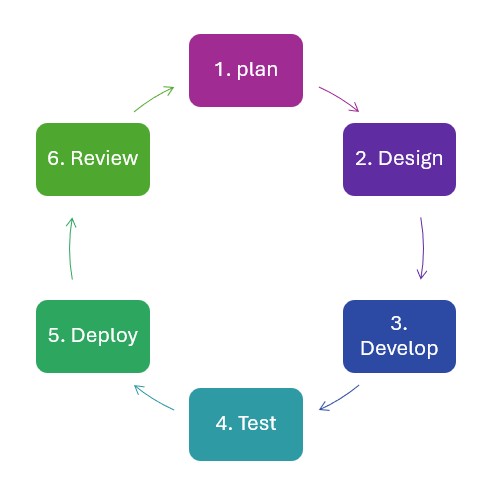
Agile Methodology Unleashed: Transform Your Software Development
Table of Contents
Are you tired of projects that drag on forever, miss deadlines, or fail to meet expectations? If you’re nodding your head, you’re not alone. Many professionals in software development, IT, and digital marketing feel the same frustration when rigid processes stifle creativity and progress. The good news? There’s a way out, and it starts with embracing agile methodology. In this blog post, I’ll walk you through how this powerful approach can solve those pain points and revolutionize your work.
Feeling the Weight: Resonating with Your Agile Struggles
It’s exhausting, isn’t it? You pour hours into planning, only to watch timelines slip and team morale tank when requirements shift mid-project. As someone who’s spent years in coding, IT security, and leadership, I’ve seen how traditional methods like the Waterfall methodology can leave teams feeling stuck. You’re not imagining it—studies show that 71% of organizations using rigid frameworks report delays or failures, according to the Project Management Institute (PMI). The pressure to deliver under outdated systems can make you question if there’s a better way.

That sinking feeling when a client changes their mind, or a bug derails your sprint—it’s all too common. You might even feel isolated, wondering if you’re the only one struggling to keep up. Trust me, you’re not. Thousands of developers and managers face this daily, and agile methodology offers a lifeline to pull you out of that chaos.
Real-Life Pain: A Story of Agile Absence
Let me paint a picture. A few years back, I worked with a mid-sized tech firm rolling out a new customer portal. The team relied on the Waterfall methodology, mapping out every detail in a 6-month plan. Three months in, the client requested a major feature overhaul. Panic set in. The developers scrambled, the budget ballooned, and the deadline? Missed by weeks. The team was burnt out, and the client was furious.
This wasn’t a one-off. Without flexibility, the project became a house of cards—one change, and it all collapsed. The developers felt powerless, the managers were stressed, and the end product? Mediocre at best. If this sounds familiar, you’ve likely lived through similar chaos. The Waterfall methodology vs Agile debate isn’t just theoretical—it’s a real-world struggle that can make or break your success.
Dream Big: A World Free of Agile Pain Points
Life with Agile Methodology
Now, imagine a different reality. Picture a workday where your team adapts to changes effortlessly, delivers working software every two weeks, and celebrates small wins together. In this world, agile methodology transforms chaos into clarity. No more endless planning sessions—your focus shifts to delivering value fast. The Standish Group reports that Agile projects are 3 times more likely to succeed than Waterfall ones, with 42% higher satisfaction rates.
You walk into a meeting feeling confident, not dread. Your developers collaborate daily, catching issues early. Clients see progress in real-time and love the results. It’s not a pipe dream—it’s what Scrum methodology, a popular Agile framework, delivers. You’re in control, stress melts away, and your projects shine.
The Emotional Payoff
Beyond the numbers, think about how this feels. Relief washes over you as deadlines become manageable. Pride swells when your team nails a sprint. You’re no longer firefighting—you’re innovating. This is the promise of agile methodology: a workplace where flexibility fuels success, and you thrive instead of just survive.
Your Roadmap: Mastering Agile Methodology Step-by-Step
Step 1: Understand What Agile Methodology Is
First, let’s define it. What is Agile methodology in software development? It’s a mindset and set of practices that prioritize adaptability, collaboration, and iterative progress. Born in 2001 with the Agile Manifesto, it values individuals and interactions over rigid processes. Unlike the Waterfall methodology, which follows a linear path, Agile breaks work into short cycles called sprints—typically 1-4 weeks—allowing constant feedback and improvement.
Why does this matter? Because 64% of software features built traditionally are rarely or never used, per the Chaos Report. Agile flips that by focusing on what users actually need. Whether you’re coding, securing networks, or leading teams, understanding this foundation is your starting point.
Step 2: Choose Your Framework—Scrum or Beyond
Next, pick a framework. Scrum methodology is the most popular, used by 66% of Agile teams (State of Agile Report). It organizes work into sprints with roles like Scrum Master and Product Owner, plus events like daily stand-ups. Alternatively, Kanban offers a visual flow for continuous delivery. I’ve led teams using both—Scrum shines for structured projects, while Kanban suits ongoing tasks.
Start small. Test Scrum with a pilot project. Assign clear roles, set a sprint goal, and track progress with tools like Jira or Trello. The key? Keep it simple and adjust as you learn.
Step 3: Build a Collaborative Culture
Agile thrives on teamwork. Break silos between developers, testers, and stakeholders. Daily stand-ups—15-minute check-ins—keep everyone aligned. I’ve seen IT security teams catch vulnerabilities faster this way. Encourage open feedback and celebrate quick wins. A Harvard study found collaborative teams are 5 times more likely to perform at a high level.
Tools matter here. Use Slack for communication and Confluence for documentation. The goal is transparency—everyone knows the plan, progress, and blockers. It’s a shift, but it pays off.
Step 4: Iterate and Improve
Finally, embrace iteration. After each sprint, hold a retrospective. What worked? What didn’t? Adjust your process. In cloud computing projects I’ve managed, this cut deployment times by 30%. The beauty of Agile is its flexibility—64% of teams tweak their methods over time (Agile Alliance). Keep refining until it fits your team perfectly.
For deeper insights, explore resources like the PMI’s Agile guide. It’s packed with stats and case studies to fuel your journey.
Agile Methodology FAQ: Clearing the Confusion
What’s the Difference Between Agile vs Scrum?
People often mix these up. Agile is the overarching philosophy—think of it as the “why.” Scrum is a specific framework within Agile—the “how.” While Agile sets principles like adaptability, Scrum provides tools like sprints and roles to make it happen. Both aim for flexibility, but Scrum adds structure.
This distinction matters. If you’re debating Agile vs Scrum, know that Scrum is just one way to live Agile. Others, like Extreme Programming (XP), focus more on coding practices. Choose based on your team’s needs.
Can Agile Work Outside Software Development?
Absolutely. I’ve applied Agile in digital marketing campaigns and IT networking projects. Its principles—iteration, collaboration—fit anywhere change is constant. A 2022 McKinsey report found 37% of non-IT Agile adopters saw productivity gains. It’s versatile, not just for coders.
Take marketing: sprints can launch campaigns faster. In IT security, daily stand-ups spot risks early. Don’t limit Agile—it’s a mindset, not a niche.
Take Charge: What’s Your Agile Next Step?
You’ve got the tools to escape the chaos of rigid workflows. Agile methodology isn’t just a buzzword—it’s a proven path to better projects and happier teams. Whether you’re wrestling with Waterfall methodology vs Agile or curious about what is omnichannel integration, the principles here apply. So, what’s holding you back? How will you start your Agile journey today?
